How to Master Tomato Gardening: From Seed to Table
- February 16, 2024
- 0 comment
Discover the secrets to mastering tomato gardening, from planting seeds to enjoying your harvest. Your guide to a lush, bountiful garden. The journey of growing tomatoes is as rewarding as it is flavorful. This guide is dedicated to helping you navigate through each step with ease, ensuring your venture into tomato gardening is successful and enjoyable. Whether you’re a seasoned gardener or a novice eager to taste your first home-grown tomato, this article promises clear, practical advice to cultivate your green thumb.
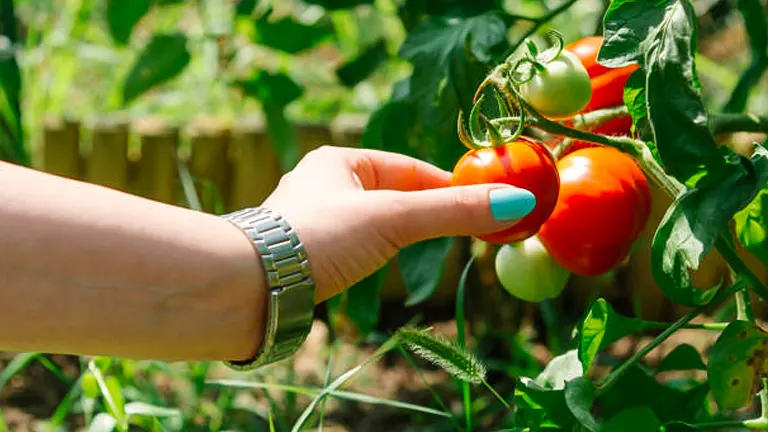
Join us as we delve into the art and science of tomato gardening, aiming for nothing less than a vibrant, fruitful garden that becomes the envy of your neighborhood.
Understanding Tomatoes
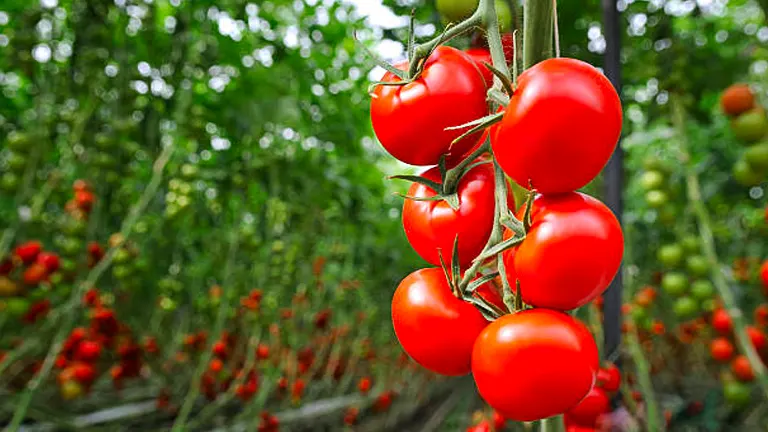
Tomatoes, scientifically known as Solanum lycopersicum, originated in South America and have transcended their initial reputation as being poisonous in Europe to become a staple in global cuisines, cherished for their versatility and vibrant colors ranging from the classic red to yellow, orange, green, and purple. Esteemed for their rich nutritional profile, tomatoes are laden with the antioxidant lycopene, associated with reducing the risk of heart disease and cancer, alongside being a good source of vitamin C, potassium, folate, and vitamin K.
They are integral to various culinary creations, adaptable to be enjoyed raw, cooked, or processed into sauces, pastes, and juices. The diversity of tomato varieties, including cherry, beefsteak, and heirloom, each contributes unique flavors suited for different dishes. Cultivating tomatoes offers both a sustainable food source and educational insights into plant growth and agriculture, thriving in warm climates with sufficient sunlight and nutrient-rich soil, making tomato gardening an enriching endeavor for gardeners of all levels.
| Specifications | Details |
|---|---|
| Scientific Name | Solanum lycopersicum |
| Family | Solanaceae (Nightshade family) |
| Origin | South America |
| Plant Type | Perennial, often grown as an annual |
| Growth Habit | Vining or Bush |
| Climate Preference | Warm, temperate |
| Soil pH | 6.2 – 6.8 |
| Planting Time | After the last frost in spring |
| Sun Exposure | Full sun (6-8 hours of direct sunlight) |
| Water Needs | 1-2 inches per week, more in hot weather |
| Fertilization | Balanced NPK, lower nitrogen preferred |
| Harvest Period | 60-100 days after planting, depending on variety |
| Nutritional Highlights | High in vitamins C and K, potassium, folate |
| Lycopene Content | 2573 µg/100g (raw, red ripe) |
| Caloric Content | Approximately 18 calories per 100g |
| Diseases | Fusarium wilt, Verticillium wilt, Tomato mosaic virus |
| Common Pests | Tomato hornworms, aphids, whiteflies |
Choosing the Right Tomato Varieties
Choosing the appropriate tomato varieties before planting is essential, as tomatoes offer a vast selection of types, each characterized by distinct flavors, textures, and cultivation requirements. The decision should align with your cooking preferences, local climate, and available gardening space, ranging from petite, sweet cherry tomatoes suitable for salads to the larger, savory beefsteak types designed for slicing.
Heirloom Tomatoes: Valued for their rich flavor diversity and heritage, heirloom tomatoes appeal to those who prioritize taste and historical significance in their gardening. While they demand more attention, the rewards are significant, offering exceptional taste and aesthetic appeal.
- Texture: Tender and juicy.
- Growth Habit: Indeterminate, requiring support.
- Flavor Profile: Rich and complex, varies by variety.
- Maturity: 60 to 90 days to harvest.
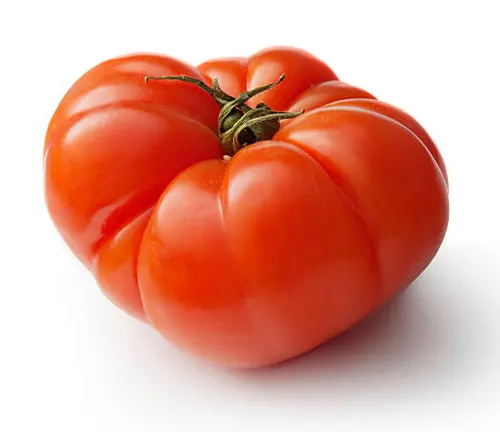
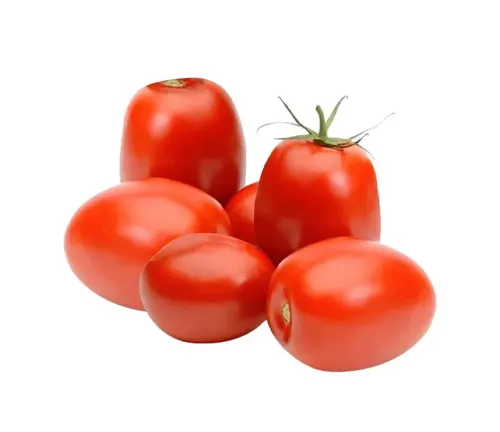
Hybrid Tomatoes: Engineered for enhanced disease resistance and consistent growth, hybrid tomatoes present a practical choice for novice gardeners. They provide reliable yields and exhibit resilience against many common plant diseases.
- Texture: Firm and uniform.
- Growth Habit: Predominantly determinate, some are indeterminate.
- Flavor Profile: Balanced, often bred for sweetness and acidity.
- Maturity: Typically 50 to 75 days to harvest.
Cherry Tomatoes: Compact and robust, cherry tomatoes are highly productive, making them perfect for small gardens or container planting. Their resilience against cracking and the ease of snacking on them directly from the vine adds to their appeal.
- Texture: Crisp and juicy.
- Growth Habit: Mostly indeterminate.
- Flavor Profile: Sweet and tangy.
- Maturity: Around 55 to 65 days to harvest.


Beefsteak Tomatoes: For enthusiasts looking to craft homemade tomato sandwiches or sauces, beefsteak tomatoes are unmatched. They necessitate ample space and structural support to thrive but deliver substantial, tasteful produce.
- Texture: Meaty and juicy.
- Growth Habit: Indeterminate.
- Flavor Profile: Rich and full-bodied.
- Maturity: 80 to 90 days to harvest.
Consider your garden’s microclimate and how much space you can dedicate to your tomato plants. Some varieties thrive in the warmth, while others are suited to cooler climates. Understanding your environment and needs will guide you to the best varieties for your garden.
Complete Guide to Mastering Tomato Gardening
Selecting Tomato Varieties
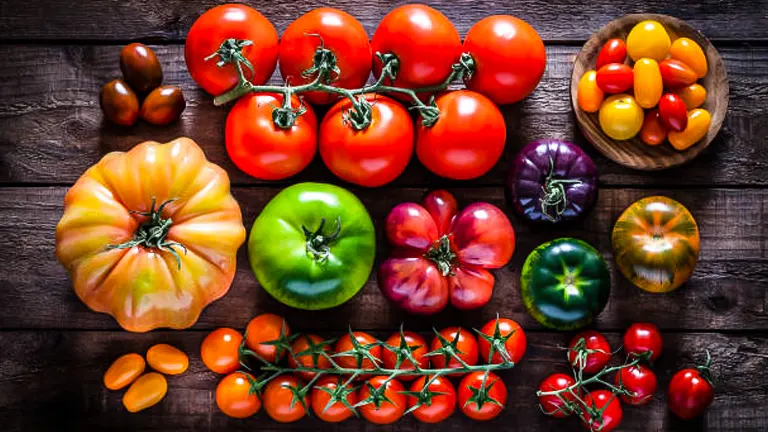
To master tomato gardening, start by selecting the right tomato varieties for your garden. Research different types, including heirloom, hybrid, cherry, and beefsteak tomatoes, focusing on those best suited to your climate, available space, and taste preferences. Prioritize varieties with disease resistance to ensure a healthier crop.
Starting Seeds Indoors
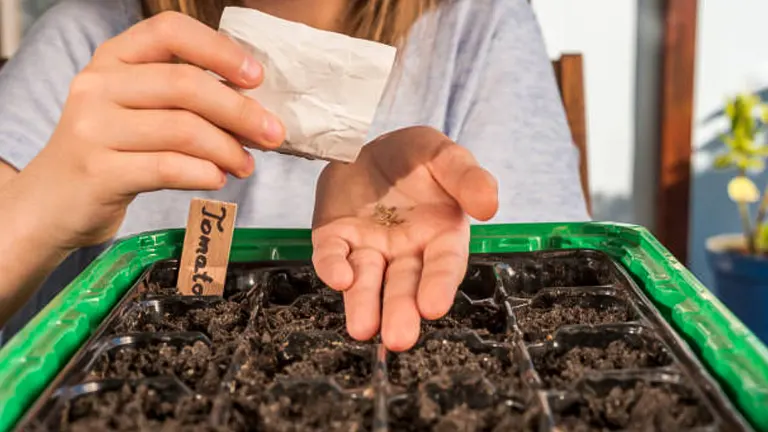
Begin your tomato journey by starting seeds indoors. Use high-quality seeds and plant them in a sterile, seed-starting mix, ensuring they’re about 1/4 inch deep. Provide the seeds with consistent warmth, between 70-80°F, and plenty of light once they germinate, to encourage strong seedling growth.
Transplanting Seedlings

As the seedlings develop, prepare to move them outdoors by hardening them off gradually, exposing them to outdoor conditions over a week to reduce transplant shock. Choose a sunny spot in your garden that receives at least 6-8 hours of direct sunlight daily and has well-draining soil. When transplanting, plant the seedlings deep, burying them up to their first set of true leaves to encourage robust root growth.
Soil Preparation and Fertilization

Soil preparation is crucial for thriving tomato plants. Enrich your garden soil with compost or aged manure before planting, and ensure your soil’s pH is between 6.0 and 7.0, adjusting as necessary. A few weeks after transplanting, apply a balanced, slow-release fertilizer to support healthy growth.
Watering and Mulching
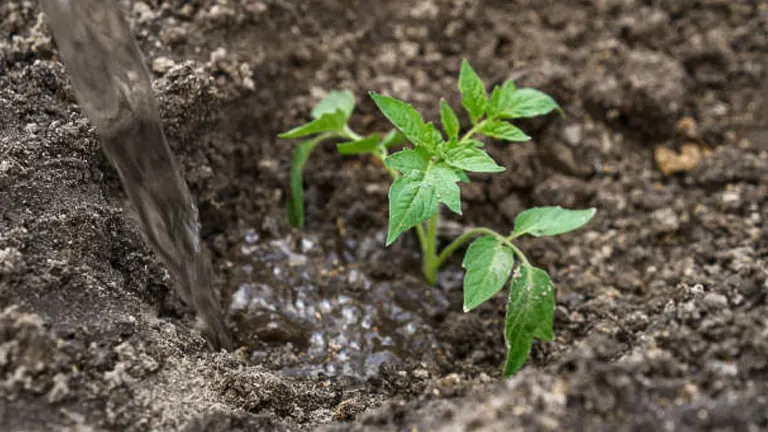
Watering and mulching are key to maintaining a healthy tomato garden. Provide deep, consistent watering, aiming for 1-2 inches per week, and mulch your plants with a 2-3 inch layer of organic material to help retain soil moisture, regulate temperature, and suppress weed growth.
Supporting Tomato Plants
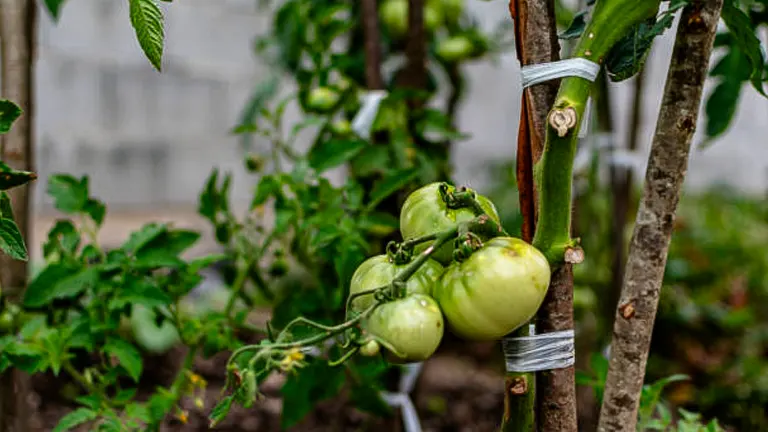
As your tomato plants grow, they will need support. Use stakes, cages, or trellises to keep them upright and ensure good air circulation. This not only helps prevent disease but also makes harvesting easier.
Pest and Disease Management
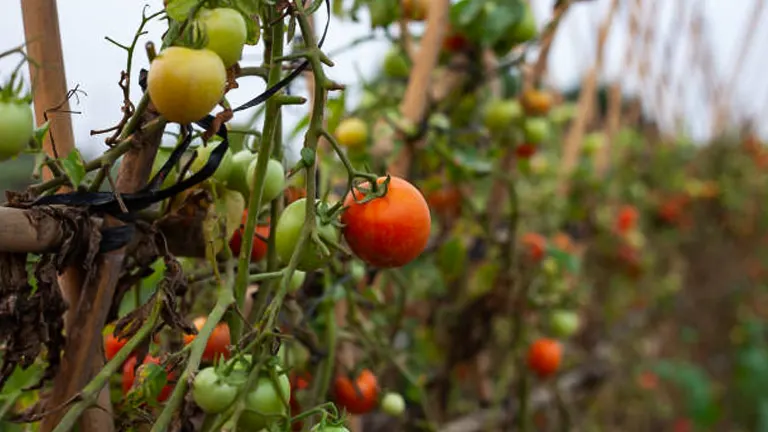
Regularly monitor your plants for pests and diseases, employing natural predators and organic treatments like neem oil or insecticidal soap to manage any issues. For indeterminate varieties, prune suckers to encourage fruiting and ensure good air circulation by managing plant density.
Harvesting
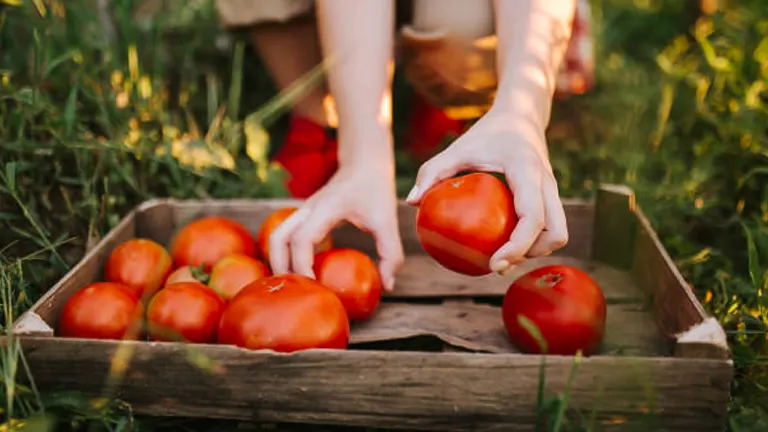
Harvest your tomatoes when they are fully colored and slightly soft to the touch, using garden shears or a gentle twist to remove them from the plant. Finally, enjoy your fresh tomatoes in a variety of dishes or preserve them through canning, drying, or freezing for future use. By following these steps, you can enjoy the rewards of a bountiful tomato garden, filled with delicious fruits ready for your table.
Enjoying Your Tomato Harvest

After harvesting, it’s time to enjoy the fruits of your labor. Fresh tomatoes can be savored in a myriad of dishes, from vibrant salads and sandwiches to rich sauces and soups. For surplus produce, consider preservation methods such as canning, drying, or freezing, allowing you to enjoy the taste of summer even in the colder months. Sharing your harvest with friends and family or experimenting with new recipes can also be a rewarding way to celebrate your gardening success.
Advanced Growing Techniques for Tomato Gardening
For the experienced gardener looking to elevate their tomato cultivation, exploring advanced growing techniques can offer new challenges and rewards. Techniques like grafting and hydroponic systems not only enhance yield and disease resistance but also allow for more efficient use of space and resources.
Grafting Tomato Plants
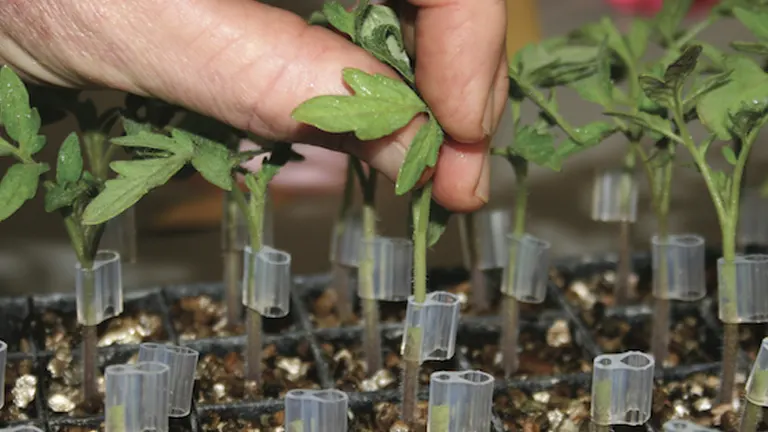
Grafting involves joining the top part of one plant (the scion) to the root system of another plant (the rootstock) to combine desirable traits from both. In tomatoes, this technique is often used to improve disease resistance, increase vigor, and extend the growing season.
- Select Compatible Varieties: Choose a disease-resistant rootstock and a scion that produces the fruit quality and flavor you desire.
- Prepare for Grafting: Use a clean, sharp blade to make precise cuts on both the scion and the rootstock. The cuts should be made at a similar angle and diameter to ensure a snug fit.
- Join and Secure: Carefully align the cut surfaces and secure them with grafting clips or tape. The goal is to keep the vascular tissues in contact so they can fuse.
- Healing Process: Keep the grafted plants in a humid, shaded environment to encourage healing and vascular fusion. Gradually acclimatize them to more light as they heal.
Grafting requires patience and practice. The success rate improves with experience, offering significant benefits in terms of plant health and productivity.
Hydroponic Systems

Hydroponics, the technique of growing plants in nutrient-rich water without soil, offers tomato gardeners a way to produce crops year-round, with faster growth rates and increased yields.
- Choose a System: From simple Kratky methods to more complex recirculating systems, select a hydroponic setup that fits your space and goals. Systems like deep water culture (DWC) or nutrient film technique (NFT) are popular among tomato growers.
- Nutrient Solution: Provide a balanced hydroponic nutrient solution that meets all the plant’s needs. Monitor pH and nutrient levels regularly to maintain optimal growing conditions.
- Support Structures: Implement support for your tomato plants as they grow. Trellises or cages can help manage the plants’ weight and encourage vertical growth.
- Environment Control: For indoor hydroponics, maintain appropriate lighting, temperature, and humidity levels. LED grow lights can provide the necessary light spectrum for growth and fruit production.
Hydroponic gardening requires an initial investment in equipment and a commitment to monitoring the system. However, the payoff in terms of yield and the ability to control environmental factors can be substantial.
These advanced techniques, grafting and hydroponics, open up new possibilities for tomato gardening, allowing enthusiasts to push the boundaries of what can be achieved in their gardens. Whether seeking to improve plant health and yield through grafting or exploring the efficient, soil-less cultivation of hydroponics, these methods offer exciting opportunities for those ready to delve deeper into the art and science of tomato gardening.
Harvest and Storage Tip
Harvesting Tips
- Timing: Harvest tomatoes when they are fully colored and firm to the touch. Picking them at the right time ensures peak flavor and nutrition. Tomatoes will continue to ripen after being picked, so even those with a hint of green can ripen off the vine.
- Technique: Use a sharp pair of garden scissors or a knife to cut the tomato from the vine, leaving a small part of the stem attached. This minimizes stress on the plant and reduces the risk of damaging the tomato. Avoid pulling or twisting tomatoes off by hand, as this can cause bruising.
- Handling: Handle tomatoes gently to avoid bruising. Even minor damage can accelerate decay. Place harvested tomatoes in a single layer in a basket or tray, ensuring they don’t press against each other too much.
Storage Tips
- Ripening: If you’ve harvested tomatoes that are still slightly green or not fully ripe, place them in a paper bag with a banana or an apple. The ethylene gas produced by these fruits will help speed up the ripening process.
- Room Temperature Storage: Store ripe tomatoes at room temperature, away from direct sunlight. They are best enjoyed within a few days of ripening for optimal flavor and texture. Storing tomatoes in a cool, dark place can also prolong their freshness.
- Refrigeration: Only refrigerate tomatoes that are fully ripe and that you can’t consume in the next couple of days. Keep in mind that refrigeration can affect the flavor and texture of tomatoes, making them less juicy and flavorful.
- Freezing: For long-term storage, tomatoes can be frozen. Wash and dry them thoroughly, then remove the stems. You can freeze them whole, sliced, chopped, or pureed. Freeze in a single layer on a baking sheet before transferring to airtight containers or freezer bags. Frozen tomatoes are best used in cooked dishes, as freezing alters their texture.
- Canning: Canning is another excellent way to preserve tomatoes. They can be canned whole, as sauce, or in salsas. Follow safe canning practices and recipes to ensure the quality and safety of canned tomatoes.
Properly harvesting and storing tomatoes can greatly extend their enjoyment well beyond the growing season. By following these tips, you’ll be able to savor the taste of your home-grown tomatoes in various dishes, ensuring nothing goes to waste.
Benefits of Planting Tomatoes
Nutritional Benefits
- Vitamin C: A potent antioxidant, vitamin C is crucial for the immune system, skin health, and the synthesis of collagen. A medium-sized tomato (approximately 123 grams) can provide about 20% of the Recommended Daily Allowance (RDA) of vitamin C.
- Potassium: Essential for maintaining electrolyte balance, nerve function, and muscle contractions. Potassium also plays a vital role in lowering blood pressure by counteracting the effects of sodium. One medium tomato offers around 292 milligrams of potassium, about 6% of the RDA.
- Folate (Vitamin B9): Important for cell function and tissue growth, folate is particularly crucial for pregnant women to support fetal development. A single medium tomato provides about 7% of the RDA for folate.
- Vitamin K: Key for blood clotting and bone health. Tomatoes contain about 9.7 micrograms of vitamin K per medium fruit, which is about 8% of the RDA.
- Lycopene: Tomatoes are one of the richest natural sources of lycopene, a powerful antioxidant with numerous health benefits. The concentration of lycopene in tomatoes can vary significantly depending on the variety and ripeness, but on average, one cup of raw tomato contains approximately 4,700 micrograms of lycopene.
Health Benefits
- Heart Health: Lycopene’s antioxidant properties help reduce LDL cholesterol levels and prevent the oxidation of cholesterol, a key factor in the development of atherosclerosis. Studies indicate that higher lycopene intake is associated with a reduced risk of cardiovascular diseases. For instance, a meta-analysis published in the journal Nutrition, Metabolism, and Cardiovascular Diseases found that high dietary lycopene intake was inversely related to the risk of heart disease.
- Cancer Prevention: Lycopene has been extensively studied for its potential role in cancer prevention. Its ability to protect DNA and cells from oxidative damage is a key mechanism. Research, including a review in the Journal of Nutritional Science and Vitaminology, suggests that lycopene may reduce the risk of prostate cancer by up to 18%. Additionally, its protective effects are also being investigated in lung, breast, and stomach cancers.
Environmental Benefits
- Reduced Carbon Footprint: Growing your own tomatoes can significantly reduce the carbon footprint associated with transporting tomatoes from farms to grocery stores.
- Promotes Biodiversity: Planting a variety of tomato plants can support a diverse ecosystem in your garden, attracting beneficial insects and promoting healthy soil.
- Water Conservation: Home gardening allows for more efficient water use, especially if you employ methods like drip irrigation or rainwater harvesting.
Economic Benefits
- Cost-Effective: Growing your own tomatoes can save you money in the long run. A single plant can produce a significant yield, reducing the need to purchase tomatoes from the store.
- Increased Property Value: Well-maintained vegetable gardens can enhance the aesthetic appeal of your property, potentially increasing its market value.
Psychological and Physical Health Benefits
- Stress Reduction: Gardening activities, including planting and tending to tomato plants, have been shown to reduce stress and promote relaxation.
- Physical Exercise: Gardening is a form of moderate physical activity that can improve endurance, strength, and flexibility. It can also burn calories and contribute to a healthy weight.
- Mental Health: Engaging with nature through gardening can improve mood, reduce feelings of depression and anxiety, and increase overall life satisfaction.
Educational Opportunities
- Learning Experience: Growing tomatoes provides an excellent opportunity for individuals of all ages to learn about the science of plant growth, nutrition, and the environmental impacts of food production.
- Family Activity: Gardening can be a rewarding family activity, offering children hands-on experience in nurturing plants and understanding where their food comes from.
Community and Social Benefits
- Community Engagement: Sharing your tomato harvest with neighbors and friends can strengthen social bonds and promote a sense of community.
- Inspires Sustainable Living: By successfully growing your own tomatoes, you can inspire others to start their own gardens, fostering a culture of sustainability and self-reliance.
Common Challenges and Solutions in Tomato Gardening
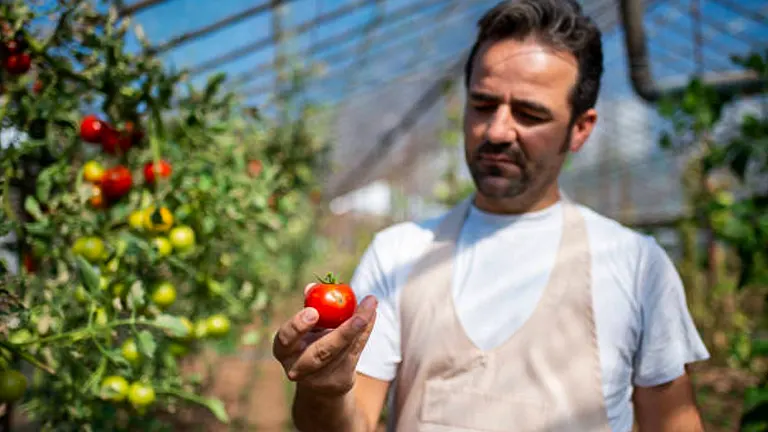
Tomato gardening is rewarding, yet gardeners often face several common challenges. Understanding these issues and implementing effective solutions can ensure a healthy and productive garden.
Blossom-End Rot
- Problem: A brown, sunken spot on the bottom of the fruit, caused by calcium deficiency often due to irregular watering.
- Solution: Maintain consistent soil moisture. Use mulch to help retain soil moisture, and consider applying calcium to the soil if the problem persists. Ensuring proper soil pH can also improve calcium uptake.
Leaf Curl
- Problem: Leaves curling or rolling, which can be a response to various stressors including extreme temperatures, improper watering, or transplant shock.
- Solution: Provide consistent care. Ensure plants are properly watered, especially during hot, dry periods. Avoid excessive pruning and handle plants gently to minimize stress.
Early and Late Blight
- Problem: Early blight manifests as dark, concentric circles on lower leaves, progressing upward, while late blight causes rapid, widespread damage with grey, moldy spots on leaves and fruits under cool, wet conditions.
- Solution: To combat both forms of blight, start with prevention. Choose blight-resistant tomato varieties and ensure good air circulation by spacing plants adequately and staking them. Apply mulch to prevent soil-borne spores from splashing onto leaves. Regularly inspect plants and remove any infected leaves or stems to halt the spread. In damp or blight-prone areas, consider using fungicides as a preventive measure early in the season, following the manufacturer’s instructions for application. Rotate your tomato crops each year to different parts of the garden to reduce disease risk.
Tomato Hornworms
- Problem: These large, green caterpillars can quickly defoliate a tomato plant, severely impacting its health and productivity.
- Solution: Monitor your plants closely and handpick any hornworms you find. Beneficial insects, such as braconid wasps, naturally control hornworm populations, so consider planting companion plants that attract these helpful predators. For severe infestations, organic insecticides like Bacillus thuringiensis (Bt) can be effective, especially when applied while the caterpillars are young.
Nutrient Deficiencies
- Problem: Tomatoes showing poor growth, yellowing leaves, or lackluster fruiting may be suffering from nutrient deficiencies, particularly nitrogen, phosphorus, or potassium.
- Solution: Conduct a soil test to identify specific nutrient deficiencies. Amend the soil based on test recommendations, using balanced, tomato-specific fertilizers to provide the necessary nutrients. Organic options, such as compost, bone meal (for phosphorus), and greensand (for potassium), can enrich the soil and support healthy plant development. Apply fertilizers according to package directions, being careful not to over-fertilize, as this can lead to lush foliage at the expense of fruit production.
Conclusion
Mastering tomato gardening from seed to table combines careful selection, nurturing growth, and tackling challenges with effective solutions. It’s a rewarding process that culminates in the joy of harvesting your own delicious tomatoes. By following proper care and storage practices, you ensure the fruits of your labor enrich your meals and preserve well for future enjoyment. This journey from seed to table not only yields a bounty of tomatoes but also the satisfaction of self-sufficiency in your gardening endeavors.
FAQs
- What’s the best time to start tomato seeds indoors?
Start tomato seeds indoors 6 to 8 weeks before the last expected frost date in your area. This timing helps ensure seedlings are strong enough to transplant after the danger of frost has passed. - How do I choose the right tomato variety for my garden?
Consider your climate, space availability, and culinary preferences. Research varieties for disease resistance and adaptability to your local conditions. Heirlooms offer unique flavors, while hybrids might provide more consistency and disease resistance. - What type of soil is best for starting tomato seeds?
Use a sterile, seed-starting mix that is light and well-draining. This helps prevent disease and provides the optimal environment for seed germination and seedling growth. - How often should I water my tomato plants?
Water deeply once or twice a week, allowing the soil to dry out slightly between waterings. The goal is to encourage deep root growth. Adjust frequency based on temperature and rainfall, as tomatoes may need more frequent watering in hot, dry conditions. - When is the right time to transplant tomato seedlings outdoors?
Transplant seedlings outdoors once all danger of frost has passed and they have developed several sets of true leaves. Be sure to harden off seedlings by gradually acclimating them to outdoor conditions over a week. - How can I protect my tomato plants from pests and diseases?
Practice crop rotation, avoid overhead watering, and maintain healthy soil. Use physical barriers like row covers for pests, and remove affected foliage promptly to prevent disease spread. Introduce beneficial insects for natural pest control. - What’s the best way to support growing tomato plants?
Install stakes, cages, or trellises at the time of planting. These supports help manage the plants’ growth, improve air circulation, and make harvesting easier. Tie plants loosely to supports as they grow. - How do I know when my tomatoes are ready to harvest?
Harvest tomatoes when they are fully colored and slightly soft to the touch. The skin should be smooth and the fruit should come off the stem easily. Taste is also a good indicator; ripe tomatoes are flavorful and aromatic.
Mastering tomato gardening brings the satisfaction of nurturing plants from seeds to harvest. With care and attention, you’ll enjoy the rewards of fresh, flavorful tomatoes straight from your garden. Happy gardening!

Benjamin Brooks
Forestry AuthorGreetings! I'm Benjamin Brooks, and my journey over the past 15 years has revolved around the fascinating realms of content creation, expertise in snow clearing, and the intricate world of lumberjacking and landscaping. What began as a simple curiosity about the natural world and heavy machinery has evolved into a passionate profession where my love for crafting words intertwines seamlessly with my lumberjacking and garden skills.


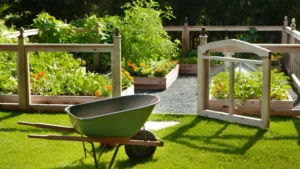
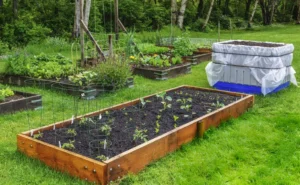

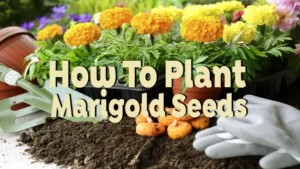
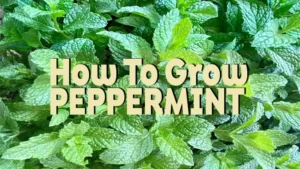



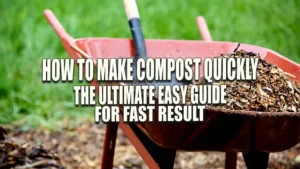

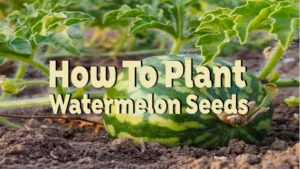
Leave your comment